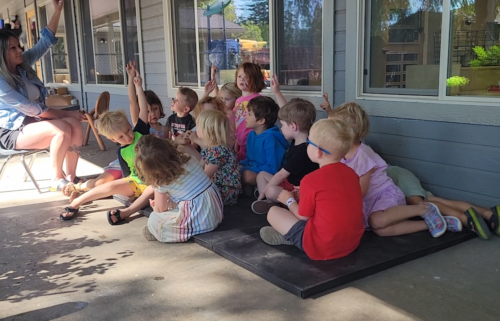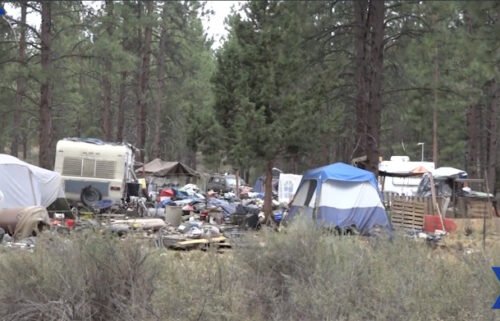Getting this tree leaning over a Metolius River trail safely to the ground was a blast — literally
'When it's a high-use area like this, then it's critical'
SISTERS, Ore. (KTVZ) -- A Ponderosa pine was lodged against another large tree and leaning over a trail near the Metolius River, and authorities decided the only safe way to take it down was to blast it.
Shane Kamrath, Thursday's lead blaster with the U.S. Forest Service, said it was a hazard for fishers and hikers, and could have been for Forest Service staff trying to bring it down.
“The wood is tensioned, these trees are under a lot of pressure and to stand there with a chainsaw would just be, not a good situation. very dangerous,” Kamrath said.
The Forest Service, including Sisters District Ranger Ian Reid, determined the safest way to take down the tree was to use explosives in controlled fashion.
“A lot of trust with the folks on the ground and in the field to make that decision that, 'Yeah, this is the right thing to do to protect the public and our employees,” Reid said.
Kamrath is a 30-year explosives vet, blasting ponds, rocks and trees many times before.
“There's a lot of hoops to jump through," he said. "They just don’t go handing out blasting licenses to anybody.”
He said there are a few challenging trees to tackle around Oregon and Washington each year.
“It depends where they are,” Kamrath said, addressing when they decide to blast. “When it's a high-use area like this, then it's critical."
For this particular operation, the Forest Service closed the trail and removed fish from that section of the river, and kept all Forest Service staff a minimum of 700 feet away from the blasting zone.
A pyramid of clay-like explosives were attached to the tree, with the hollow-core shock tube connecting to the detonator.
Various teams took their positions, checking by radio to make sure no one was in the area.
Then it was time for detonation.
The blast was successful, knocking down the top of the standing tree, which allowed the leaning tree to fall.
“We're never going to eliminate every risk that exists out there," Reid said. "But if we know a hazard occurs, it's our responsibility to protect the folks who are using their public lands and their national forests.”




